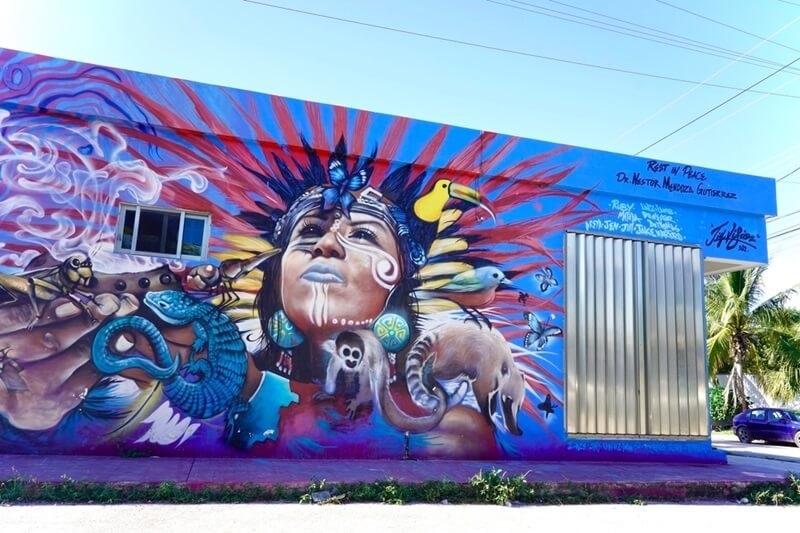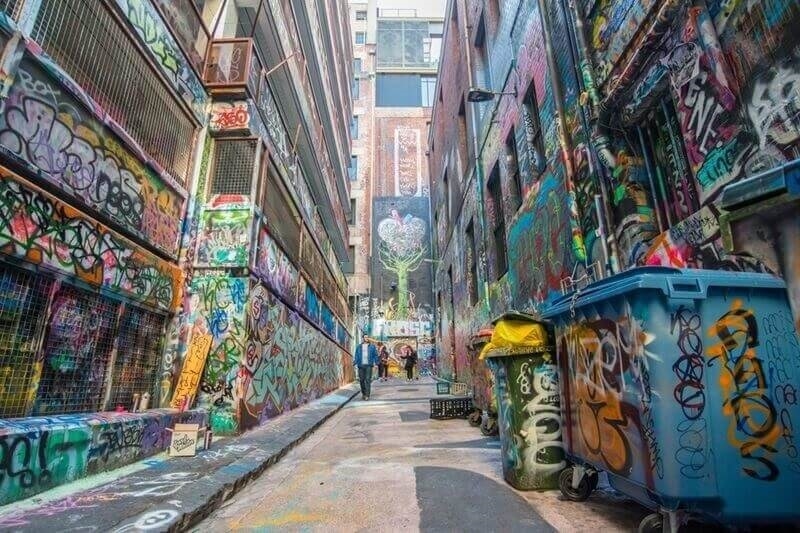
Pop art murals are no longer a daring treat on urban walls but a vibrant way to express oneself, tell a narrative, and share a sense of place in 2025. Mural pop art was once associated with comic book graphics and saturated colors, but it now brings life to city streets, sparks conversation, and transforms regular locations into art museums. So what is happening to make cities colorful these days? Just let us see how this is happening.
Pop art has gone to the streets big time. Murals that take their designs inspired by pop culture have become an important aspect of city design, be it in the sidewalks or subways.
A pop art mural is a mural or a large painting done on a wall that is influenced by pop culture, such as comic books and celebrities and advertising, and everyday items. It is typically thick-line based, colorful, and patterned repetitively. This fashion first appeared in the 1950s and 60s but is more responding than ever.
Pop art murals are the favorite of urban planners and communities that brighten boring locations and discourage graffiti, as well as drawing tourists. After creating these murals, an abandoned alley can become a place to take your Instagram photos or make a bus stop appear as a pop culture party.
Mural pop art can be enjoyed by all, unlike museums. The passersby can have fun with the color, meaning, and jokes that are included in such murals. It takes art to individuals who may not visit galleries regularly, and in the process, it makes creativity a daily routine.

Pop art murals do more than just look pretty—they tell stories that reflect the identity and values of the neighborhood.
Many muralists paint images of famous people from their city, such as musicians, activists, or athletes. These mural pop art pieces help preserve local history and celebrate diversity.
Pop art murals often carry messages about unity, peace, justice, or joy. Artists use vibrant designs to express serious topics, making them approachable and powerful.
Creating a pop art wallpaper mural can be a group project, involving schools, artists, and residents. This helps build a sense of pride and connection in the community.
A pop art mural isn’t just about what’s painted—it’s about how it’s painted. The style and technique play a big role in catching the viewer’s attention.
These are the trademarks of pop art murals. Bright reds, yellows, and blues, combined with thick black outlines, give murals that eye-catching, comic book feel.
Like Andy Warhol’s repeated images of soup cans and celebrities, many mural pop art designs use repetition to create rhythm and interest.
Many artists add short, powerful words like “LOVE,” “WOW,” or “HOPE” in big letters. This combination of text and image is a key part of the pop art style.
In 2025, cities across the world have embraced pop art murals in different public spaces. Let’s look at where these murals appear and why those places matter.
City walls, underpasses, and buildings are perfect canvases for muralists. A pop art wall mural can cover an entire side of a building, becoming a city landmark.
Transportation spaces have become colorful thanks to pop art wallpaper murals. Commuters get to enjoy art during their daily travel routines.
Many schools use mural pop art to decorate hallways and classrooms. These fun, energetic murals can boost creativity and student engagement.
Outdoor gathering areas often feature pop art murals to create a welcoming and exciting environment. These spots are great for photo ops and community events.
Behind every eye-catching mural is a talented artist with a unique vision. These muralists are known for bringing pop art to public spaces.
Kobra uses kaleidoscopic colors and pop culture icons to create jaw-dropping murals. His portraits of famous people in pop art style appear in cities worldwide.
Known for large-scale street art, Eaton blends vintage comic designs and celebrity portraits in his wall mural pop art work.
This London-based artist creates bold, humorous murals inspired by comic books and punk rock, giving a rebellious twist to pop art murals.
Technology and street art are merging in new and exciting ways. In 2025, pop art murals aren’t just static images—they’re interactive and futuristic.
Some pop art wallpaper murals now use AR. When viewed through a smartphone app, animations or sound effects bring the mural to life.
Cities are using interactive maps to let visitors find mural pop art across town. This encourages tourism and community engagement.
Colorful murals don’t just improve public spaces—they support businesses and generate income for local artists.
People love to take selfies in front of pop art wall murals. This foot traffic helps nearby shops, cafes, and galleries.
Cities often commission artists to create murals, giving them a platform and income. This supports creativity and job growth in the art sector.
While outdoor murals are popular, many businesses and homes are now choosing pop art wallpaper murals indoors to create modern, energetic spaces.
Companies use pop art mural designs to inspire creativity and make workspaces more fun and vibrant.
A bright wall mural pop art can become the central attraction of a dining space, drawing in younger, social media-savvy crowds.
Whether you're an artist, business owner, or community organizer, creating a pop art mural requires planning and creativity. It’s a chance to make a statement.
Pop art walls are not merely sublimely beautiful wall paintings. They are culture, creativity, and community pride. Whether they are the monumental mural pop art painting in a city square or a mini pop art wallpaper mural in a bedroom, these things create life, vitality, and expression in our midst. As the face of the modern world speculates on the notion of the public area in 2025, so will come the multi-colored power of pop art murals.
This content was created by AI